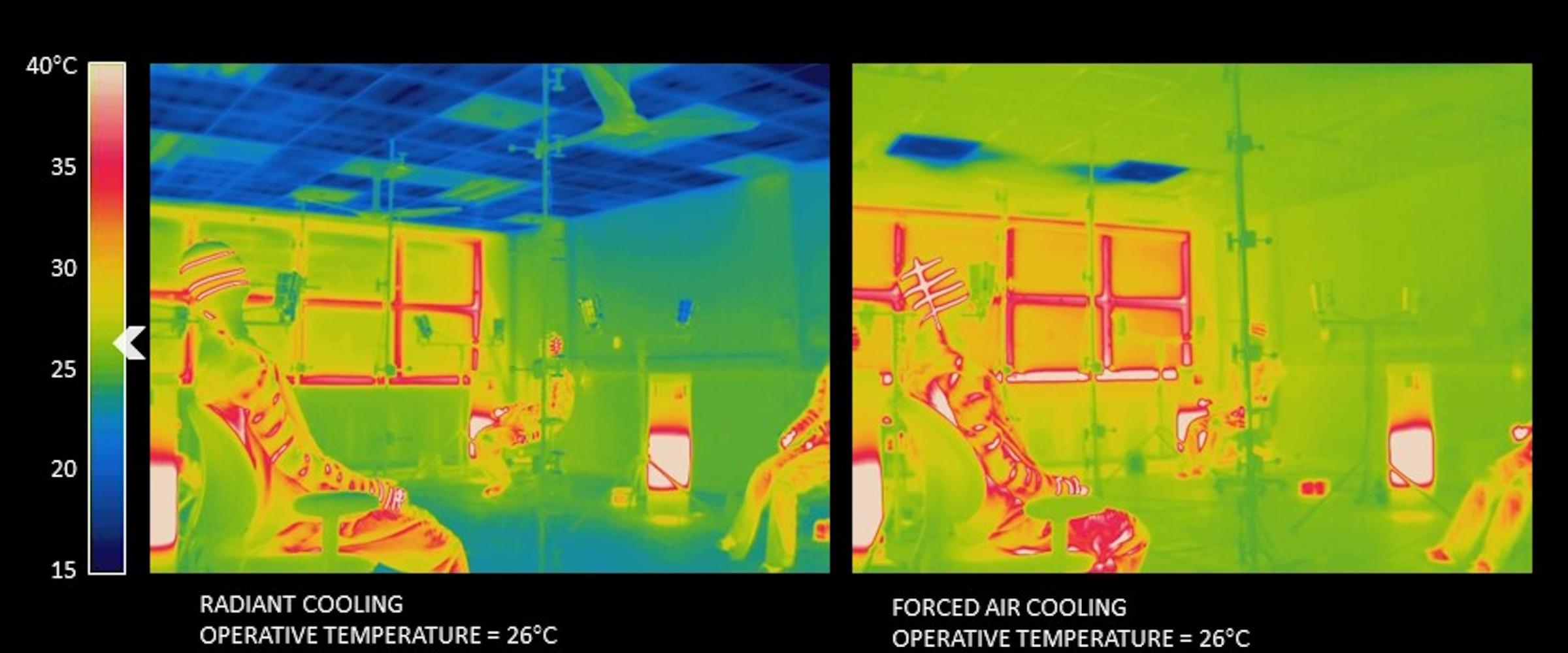Radiant Cooling
Case Study Publish in 2021
The Challenge: Unknowns in Radiant Cooling Performance
Radiant cooling systems, which use cooled surfaces such as floors or ceilings to absorb heat from a room, can help cut energy use and lower and shift peak electricity demand in buildings compared to conventional all-air systems. But radiant cooling systems aren't yet widely deployed, which means data about how realistic and practical on-site factors such as carpeting, ceiling fans, direct sunlight, ventilation, and control strategies affect their performance are incomplete.
The energy savings from radiant cooling systems depend largely on whether or not the building’s cooling plant, hydronic and ventilation systems, and control strategies are optimized to operate with a system that uses radiant heat exchange with high thermal mass, such as the structural or topping concrete slabs of a building. And while previous research has compared radiant and all-air cooling systems in simulation and idealized laboratory settings, there hasn't been a scientific look at how radiant cooling systems perform under more realistic operating conditions.
The Solution: FLEXLAB®
Researchers at the Center for the Built Environment at the University of California, Berkeley, conducted in-depth and extensive studies of radiant cooling systems at the U.S. Department of Energy's FLEXLAB® facility at Lawrence Berkeley National Laboratory. Using FLEXLAB's test chambers, they assessed the effect of solar radiation, increased air movement, carpeting, control strategies, and other factors on cooling capacity for radiant systems. They also compared radiant and conventional systems side by side to assess heat extraction rates in different scenarios. The experiments yielded three research papers, two of which have been published in the journal, Energy & Buildings.
The Bottom Line: New Insights into Radiant Cooling System Performance
FLEXLAB's unique facilities made it possible for researchers to evaluate the real-world factors that can affect cooling performance for radiant systems, helping to inform strategies that will maximize energy savings while reducing operational costs and greenhouse gas emissions. The experiments confirmed that cooling load estimates for all-air systems cannot be extrapolated to represent the space heat extraction rates required for radiant systems. And the wide range of impacts observed in different building scenarios have consequences for the choice, design, and control of mechanical cooling systems, especially in buildings that also use passive cooling strategies such as natural ventilation.
Download the full case study here: Radiant Cooling
"The large, full-scale rooms enabled us to expose the system to direct solar radiation (through windows) over several consecutive days to investigate the transient impacts of thermal mass. It was great to be able to compare two conditions simultaneously."
Fred Bauman, , P.E., FASHRAE University of California, Berkeley Center for the Built Environment Project Scientist
